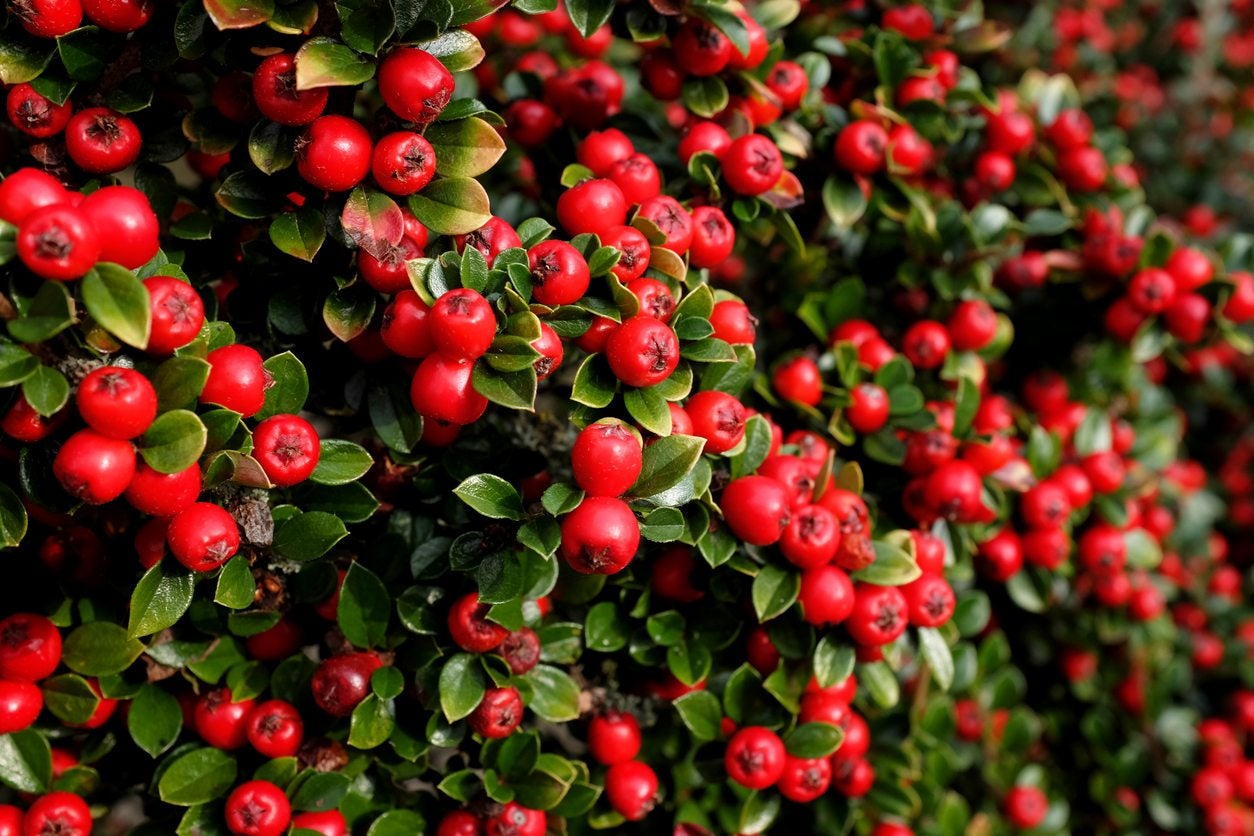How To Grow Cotoneaster: Caring For Different Types Of Cotoneaster


Whether you're looking for a 6 inch (15 cm.) groundcover or a 10 foot (3 m.) hedge plant, cotoneaster has a shrub for you. Though they vary in size, the many species of cotoneaster all have a few things in common. Cotoneasters have a wide spread three times or more their height, glossy leaves, and red or black fall and winter berries. Growing cotoneaster is a snap, as most species shrug off adverse conditions like drought, strong winds, salt spray, infertile soil, and variable pH.
Types of Cotoneaster
Cotoneaster has many uses in the garden, depending on the species. Here is a list of common types of cotoneaster:
- Cranberry cotoneaster- Cranberry cotoneaster (C. apiculatus) makes a good groundcover for erosion control, especially on slopes. Pink summer blossoms are followed by small, red berries in fall. In addition, the fall foliage turns a bronzy shade of red. The shrubs grow 2 to 3 feet (61-91 cm.) tall with a spread of up to 6 feet (2 m.).
- Bearberry- Bearberry (C. dammeri) is another low-growing variety that makes a good groundcover. Small, white flowers bloom in spring, followed by red fruit in late summer. The fall foliage is bronzy purple.
- Spreading cotoneaster- Spreading cotoneaster (C. divaricatus) forms a 5 to 7 foot (1.5-2 m.) shrub with lovely yellow and red fall colors that lasts a month or more. Red berries that last into mid-autumn follow the white summer flowers. Use it as a hedge or a tall foundation plant.
- Hedge cotoneaster- Hedge cotoneaster (C. lucidus) and many-flowered cotoneaster (C. multiflorus) are excellent choices for screening hedges. They grow 10 to 12 feet (3-4 m.) tall. Hedge cotoneaster can be sheared as a formal hedge, but many-flowered cotoneaster develops a naturally rounded shape that is best left alone.
How to Grow Cotoneaster
Cotoneaster plant care is easy when you plant it in a good location. They need full sun or partial shade, and thrive in fertile soils but tolerate any soil as long as it is well-drained. Most types of cotoneaster are hardy in USDA plant hardiness zones 5 through 7 or 8. Cotoneaster shrubs only need watering during prolonged dry spells and do fine without regular fertilization, but shrubs that don't seem to be growing may benefit from a light dose of complete fertilizer. It's a good idea to apply a thick layer of mulch around groundcover types soon after planting to suppress weeds. It's difficult to weed around the low-growing plants once they begin to spread. Prune cotoneaster shrubs any time of year. Most types only need light pruning to remove wayward branches or to control disease. To keep the plants looking neat, cut out selected branches all the way to the base rather than shearing or shortening them.
Sign up for the Gardening Know How newsletter today and receive a free copy of our e-book "How to Grow Delicious Tomatoes".

Jackie Carroll has written over 500 articles for Gardening Know How on a wide range of topics.